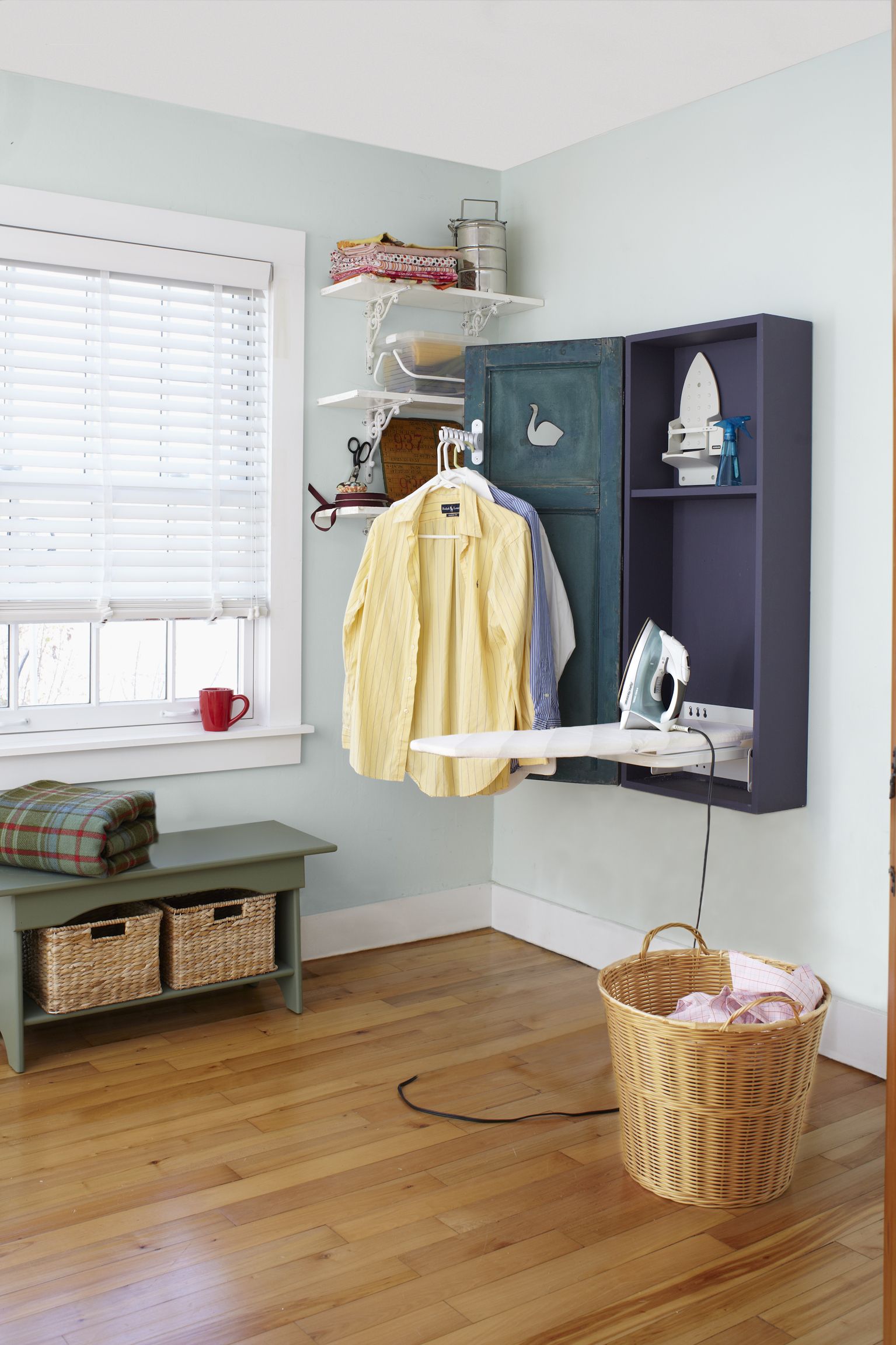We may be compensated if you purchase through links on our website. Our team is committed to delivering honest, objective, and independent reviews on home products and services.
Creating a custom shutter-door ironing cabinet is a great way to combine functionality with style in your laundry area or bedroom. This do-it-yourself (DIY) project not only provides a convenient space for ironing but also adds a touch of charm to your home decor. By repurposing a salvaged shutter and incorporating a fold-up ironing board, you can craft a unique piece that’s both practical and visually appealing. This guide walks you through the process of building your own shutter-door ironing cabinet, from selecting materials to the final paint job.
Old Shutters Adorn Windows and More
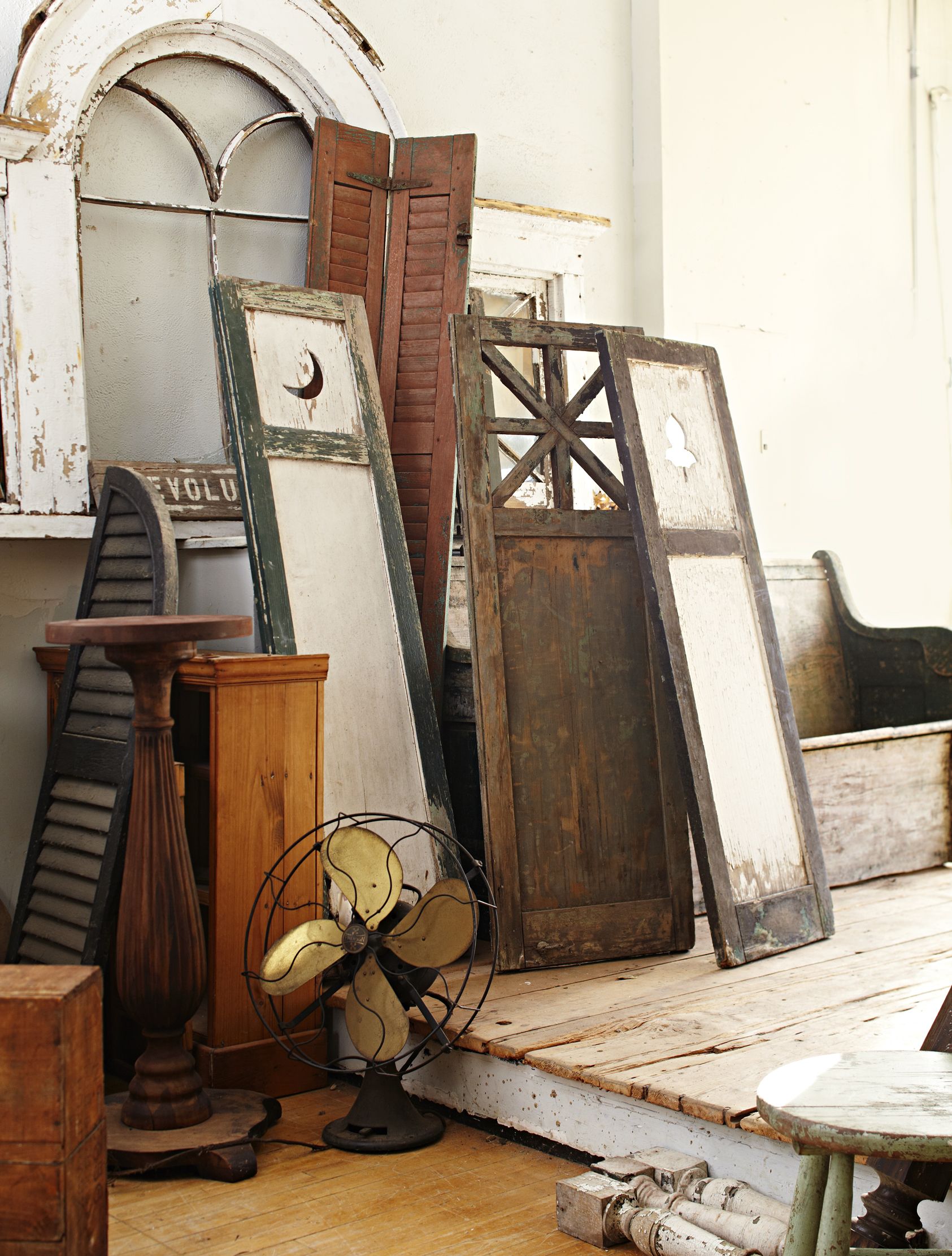
Vintage shutters offer a wealth of possibilities for home decor and DIY projects. Unlike many modern decorative shutters, which are often in an open position, traditional shutters were designed to be functional. These operable shutters swing on hinges mounted to the window surround, and you can secure them with tiebacks, known as “shutter dogs,” when they’re not in use.
While you can find operable shutters at home improvement centers today, the quality and craftsmanship of vintage shutters are often unmatched. To acquire these unique pieces, visit salvage yards or antique shops.
When working with old shutters, it’s important to be aware that they may have a coat of lead paint. For safety, brush on a clear polyacrylic sealer to encapsulate any old paint before repurposing the shutter. This step will protect you and your family while preserving the shutter’s original character. Many vintage shutters also feature unique details that add to their charm, such as louvered slats or decorative cutouts, which can improve your project’s appearance.
Tools and Materials Needed to Conver Shutters into Doors
Gather the following tools and materials for this project:
- Bar clamps
- Circular saw
- Drill/driver
- Paintbrush
- Pencil
- Rafter square
- Screwdriver
- Tape measure
 Tape measure
Tape measure Pencil
Pencil Rafter square
Rafter square Circular saw
Circular saw Bar clamps
Bar clamps Drill/driver
Drill/driver Screwdriver
Screwdriver Paintbrush
Paintbrush
Measure for the Cabinet Frame
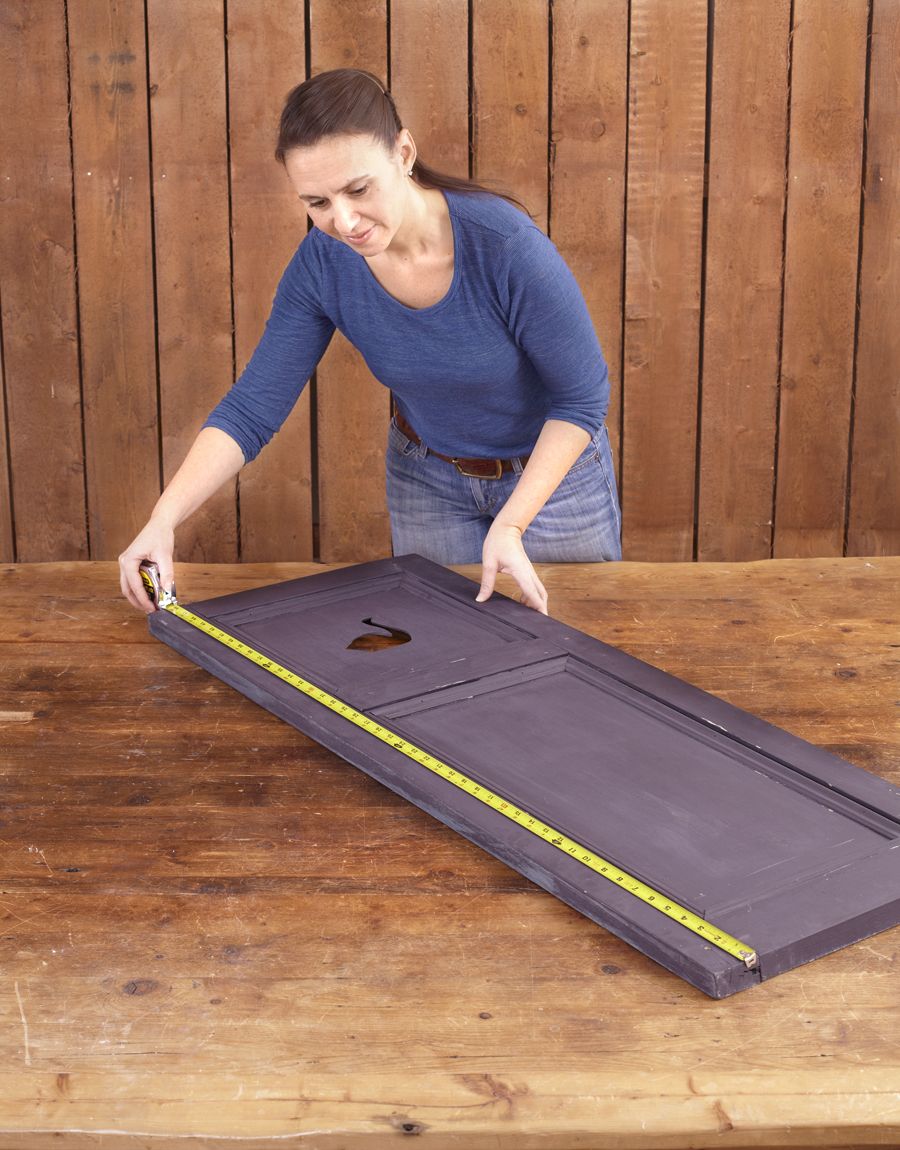
The first step in creating your shutter-door ironing cabinet is to measure the shutter accurately. Use a tape measure to determine the shutter’s length, which will dictate the height of your cabinet’s sides. For this project, we’ll be using 1×8 boards for the sides.
To determine the dimensions for the cabinet top and bottom, measure the shutter’s width and subtract half an inch. This adjustment means that these boards will fit snugly between the side pieces, creating a sturdy frame for your cabinet.
Remember that you need precise measurements for a well-fitted cabinet. Take your time and double-check your measurements before moving on to the next step. Accurate measurements will prevent alignment issues and make sure that the various components of your cabinet fit together seamlessly. It might be helpful to draw a diagram of your measurements and plans to visualize the final outcome.
Mark the Boards and Cut to Length
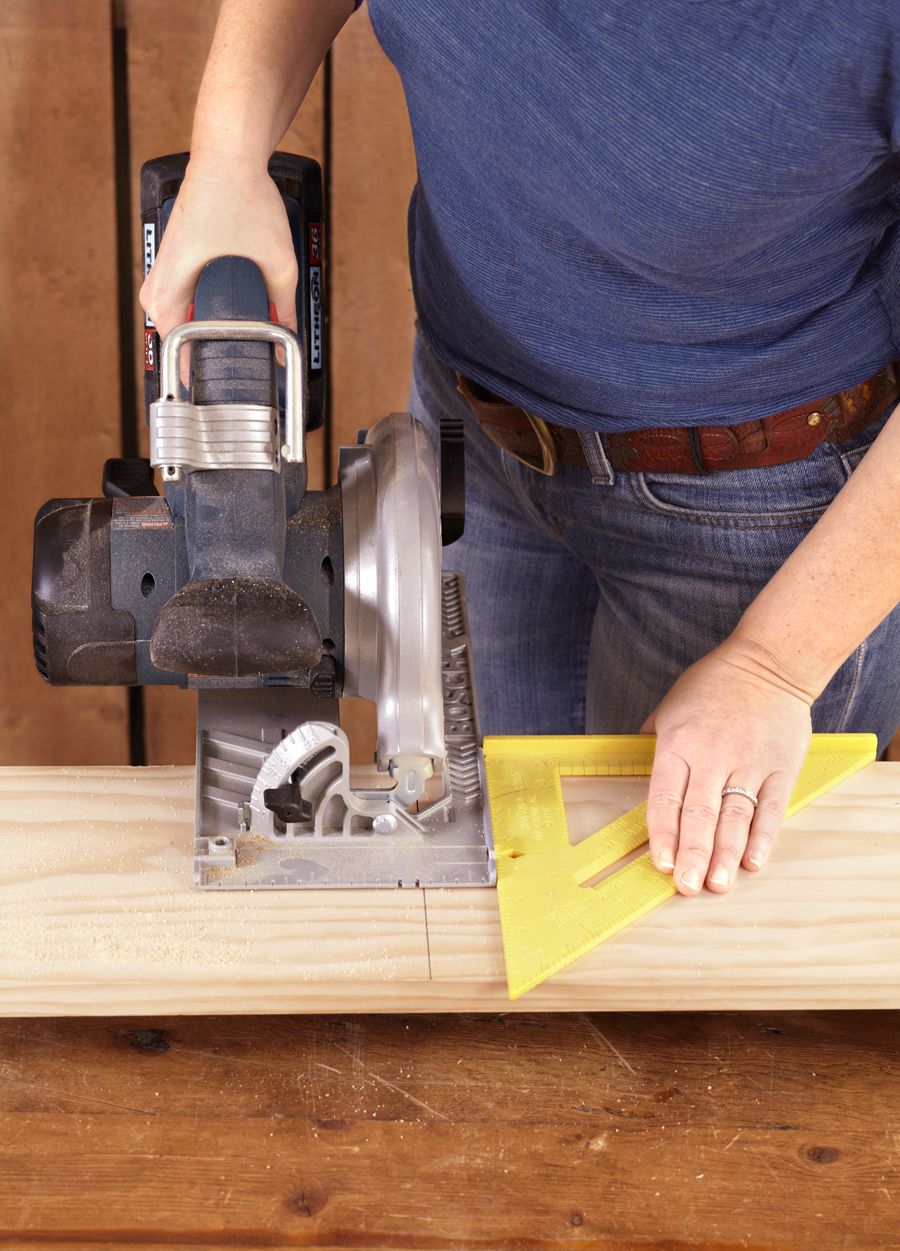
Once you have your measurements, it’s time to transfer them to your boards. Use a pencil to mark the cutting lines clearly on each piece. For accuracy, employ a rafter square as a guide when marking your cut lines.
When you’re ready to cut, use a circular saw to trim the boards to their proper lengths. Always wear appropriate safety gear, such as safety glasses and hearing protection, when operating power tools. Make sure to cut on a stable surface and keep your hands clear of the blade at all times.
If you’re new to using a circular saw, practice on some scrap wood first to get comfortable with the tool. Remember, it’s always better to cut slightly long and trim down if necessary rather than cutting too short and wasting material. Additionally, cutting slowly and steadily will help you achieve cleaner edges.
Build the Cabinet Frame
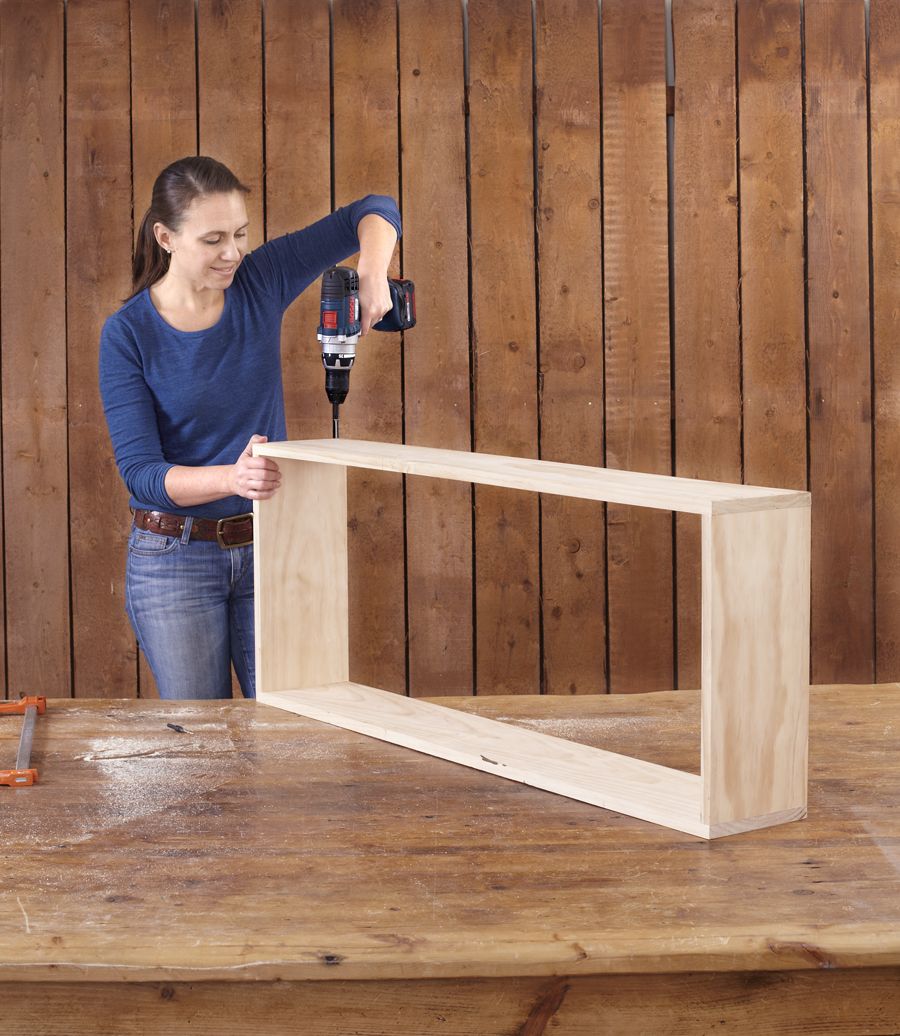
With your boards cut to size, it’s time to assemble the cabinet frame. Begin by laying out the pieces in their final configuration. Use bar clamps to hold the top and bottom boards securely between the side pieces. This step helps everything stay in place while you’re working.
Before fastening the boards together, drill pilot holes for your one-and-a-half-inch wood screws. Pilot holes prevent the wood from splitting and make it easier to drive the screws straight. Use a drill bit slightly smaller than the diameter of your screws to create these holes.
Once your pilot holes are ready, drive in the wood screws to join the frame pieces together. Work methodically, making sure that each corner is square and the frame is level. A sturdy frame leads to a functional and long-lasting cabinet. Be sure to check the alignment frequently during this step to prevent any skewed corners.
Add the Back
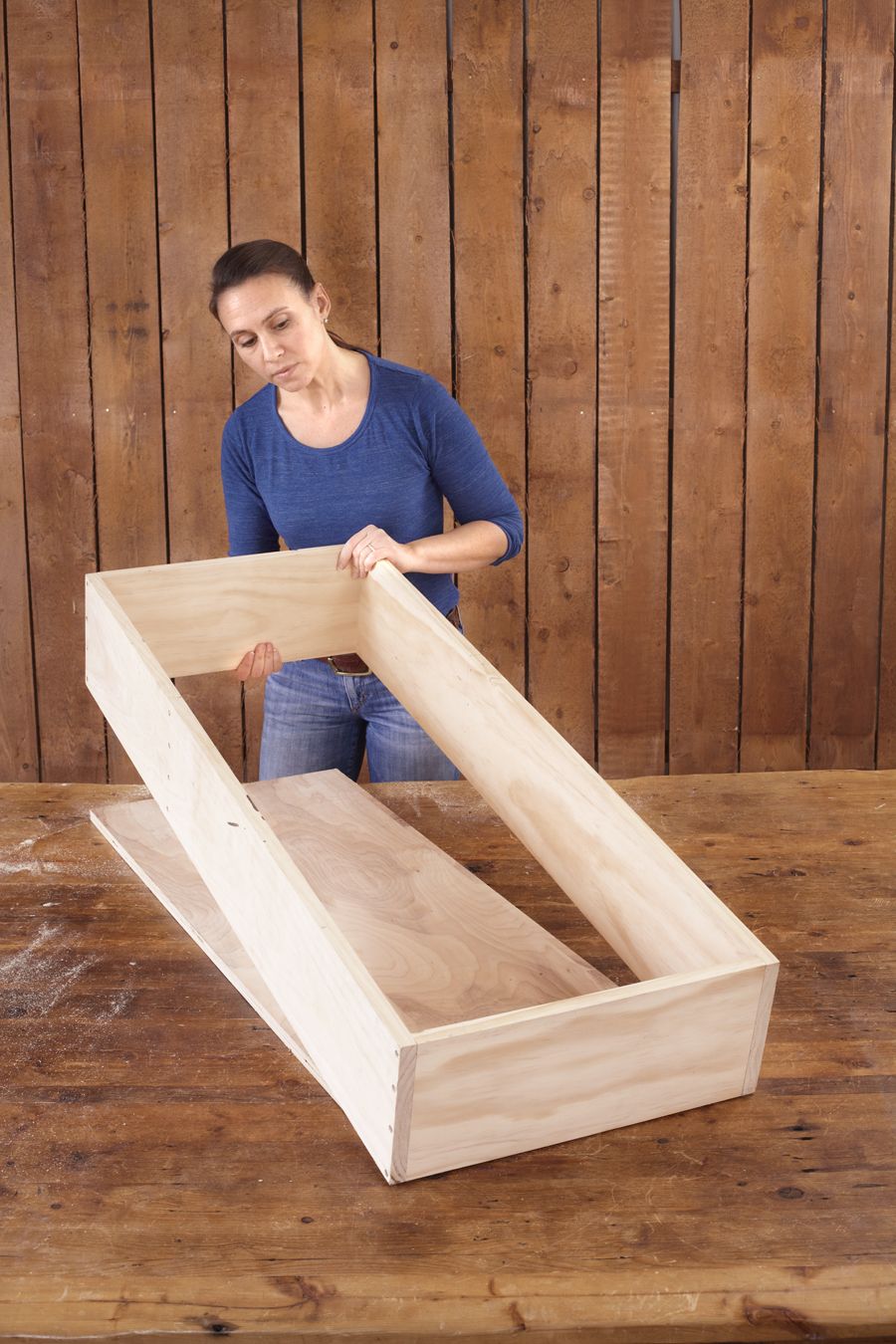
The next step is to add a back panel to your cabinet frame. Cut a piece of three-fourth-inch plywood to match the inner dimensions of your cabinet frame. This back panel will provide stability and create a solid surface for mounting your ironing board later.
Before attaching the back panel, double-check that it fits snugly within the frame. If necessary, make small adjustments to achieve a perfect fit. Once you’re satisfied with the fit, secure the plywood back to the frame using wood screws.
Remember to drill pilot holes through the plywood and into the frame before driving in the screws. This step is especially important when working with plywood, as it can be prone to splitting. Space your screws evenly along the sides, top, and bottom of the frame for maximum strength. Also, add a bead of wood glue along the edges before securing the back panel for additional stability.
Make a Shelf
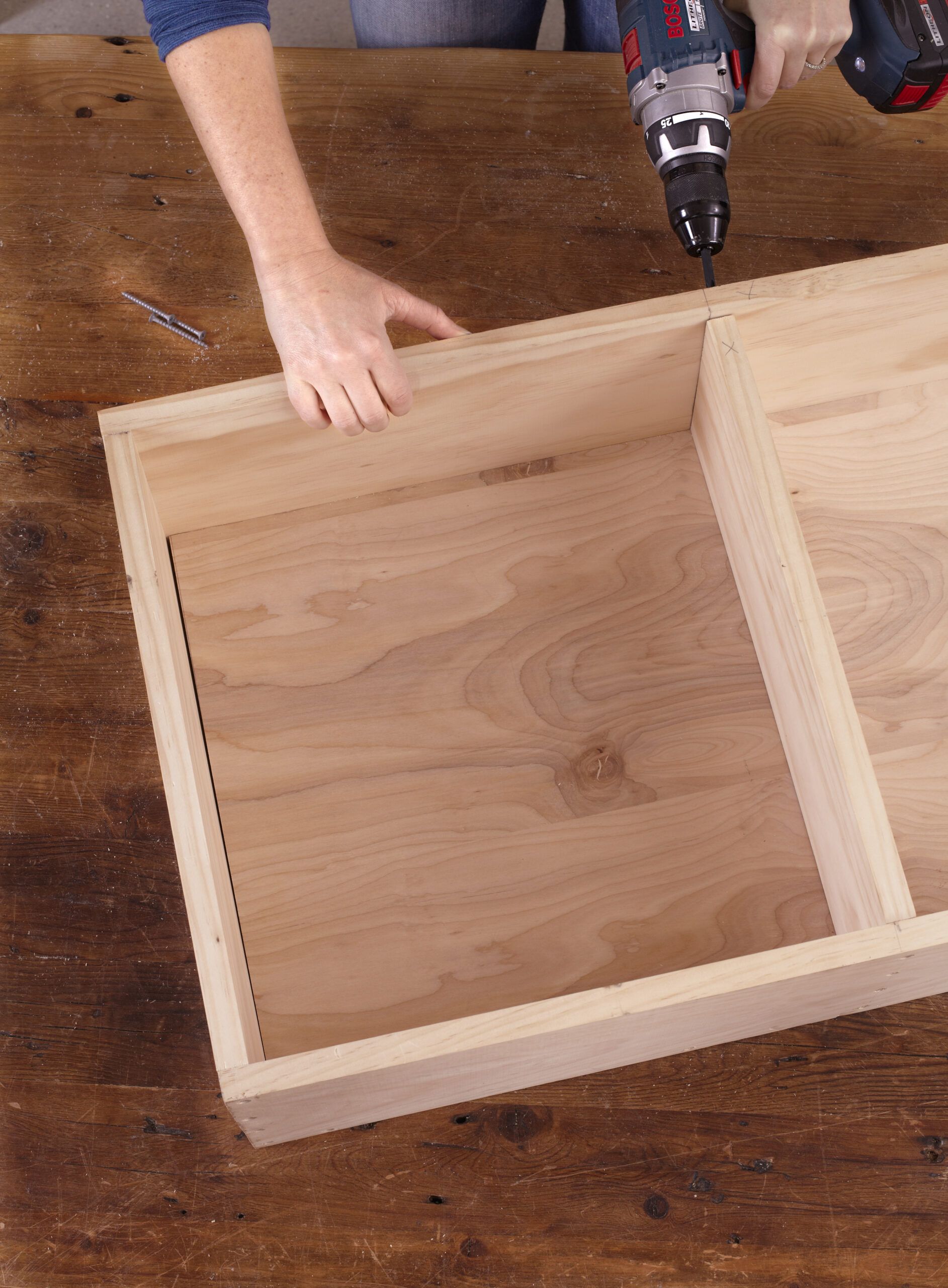
Adding an interior shelf to your cabinet provides valuable storage space for ironing supplies. Cut a shelf board to the same length as the cabinet frame’s top and bottom, but make it three-fourths of an inch narrower to accommodate the cabinet’s inset back panel.
To install the shelf, determine its desired height within the cabinet. Mark this position on the inside of the cabinet sides. Use a level to check that your marks are even on both sides. Drill pilot holes at these marks, then secure the shelf with wood screws.
Add support blocks beneath the shelf for extra stability, especially if you plan to store heavier items. These blocks can be small pieces of wood screwed to the cabinet sides beneath the shelf. Additionally, these support blocks can offer a decorative touch if you choose to shape or paint them.
Add the Shutter Door
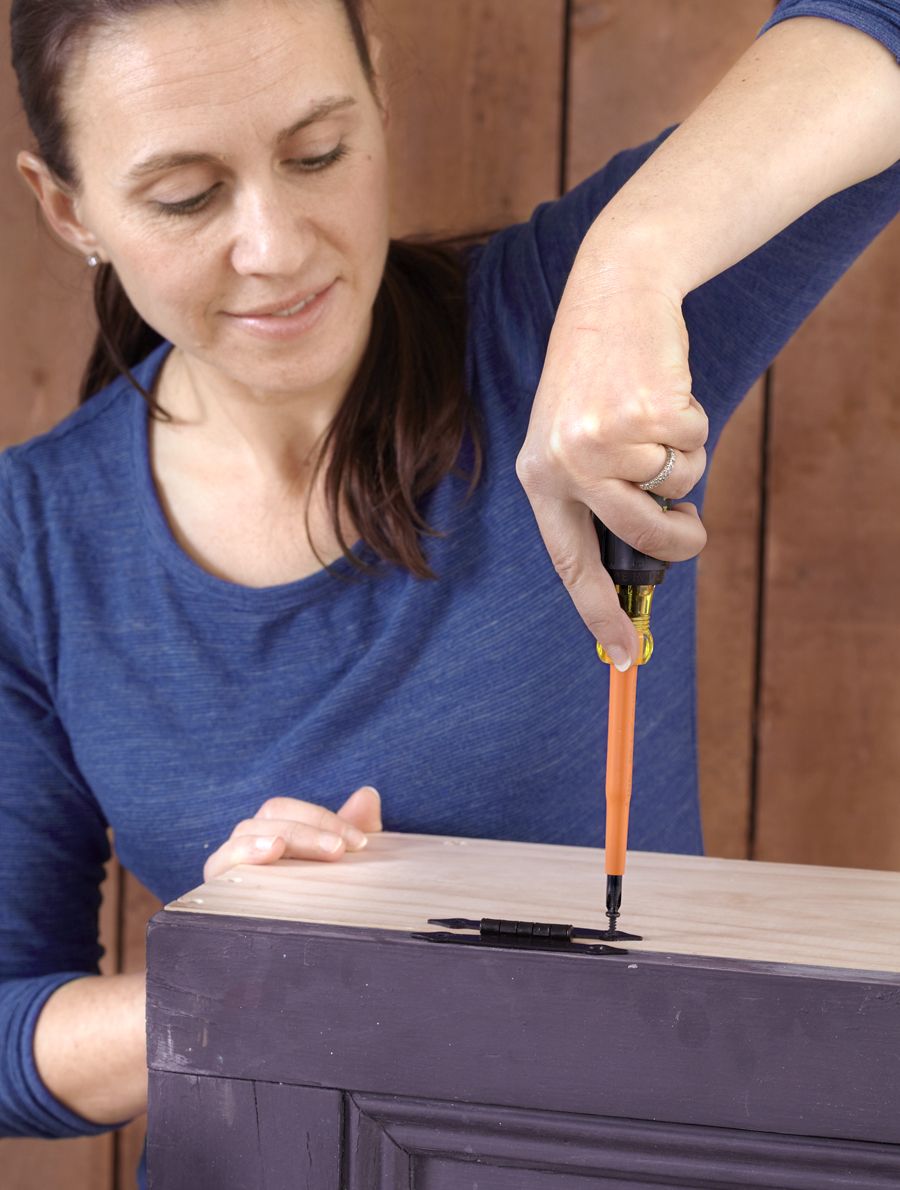
Now it’s time to attach your salvaged shutter to the cabinet frame, transforming it into a unique door. Begin by selecting appropriate hinges for your shutter. Choose hinges that complement the style of your shutter and are sturdy enough to support its weight.
Position the shutter on the cabinet frame and mark where the hinges will be attached. Drill pilot holes for the hinge screws, being careful not to drill all the way through the wood. Attach the hinges to the cabinet frame first, then to the shutter.
For smooth operation, use a screwdriver rather than a power drill when fastening the hinge screws. This method reduces the risk of stripping the soft metal screws often used in decorative hinges.
Finally, add a cabinet knob to the shutter to make it easy to open and close. Choose a knob that complements the style of your shutter and cabinet. Install it at a comfortable height for easy access. You might also want to add a magnetic catch to keep the door securely closed when not in use.
Install the Ironing Board
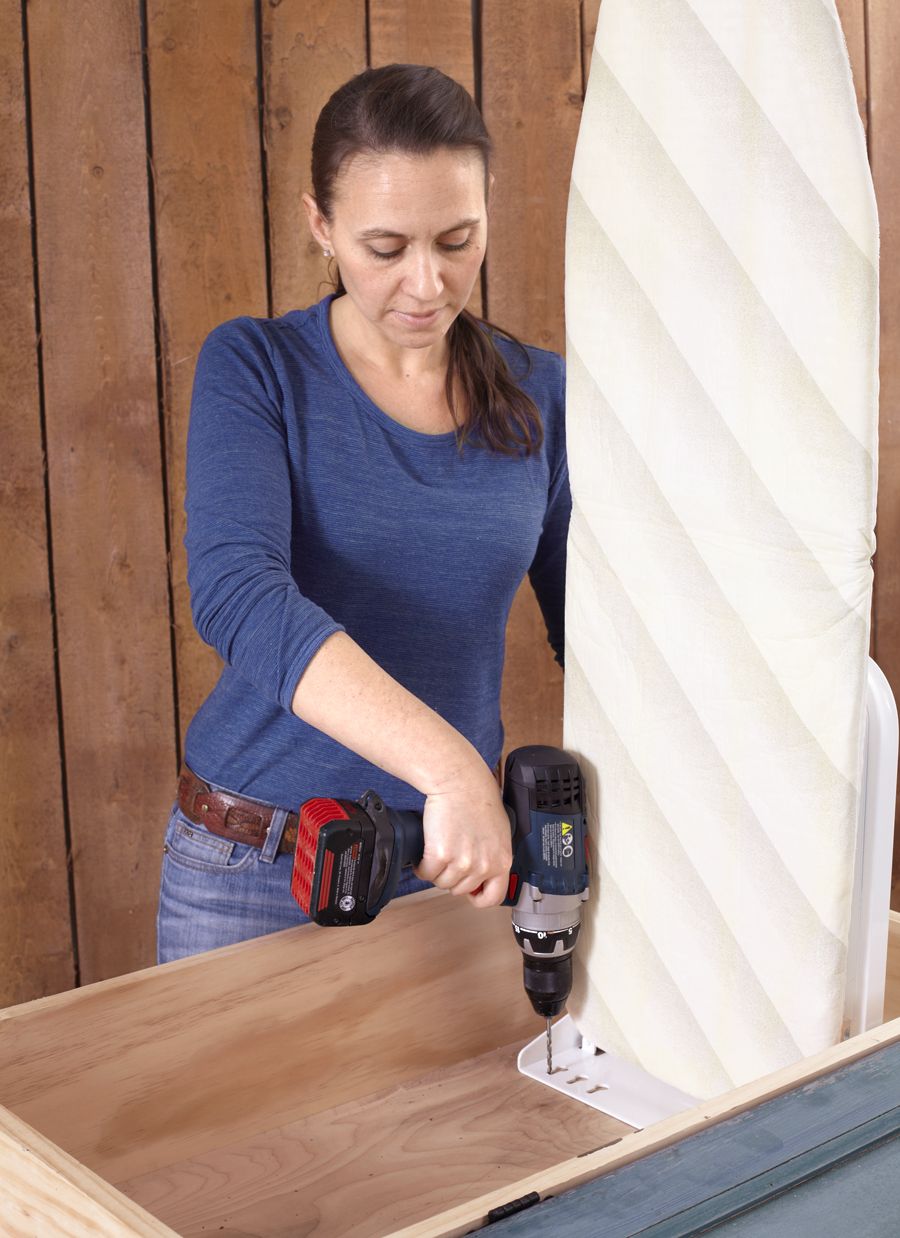
Installing the fold-up ironing board creates a functional ironing cabinet. Begin by positioning the ironing board mechanism on the back panel of the cabinet. Make sure it’s centered and at a comfortable height for use.
Mark the mounting holes for the ironing board, then drill pilot holes. Secure the ironing board to the back panel using three-fourth-inch No. 10 screws for extra strength. These larger screws will provide better support than the standard screws that may come with the ironing board kit.
Next, install the iron rest. This accessory provides a safe place to set your hot iron while you’re working. Position it at a convenient height near the ironing board. Use the supplied fasteners to attach it securely to the back panel.
Finally, add a hanging bar to the inside of the shutter door. This feature allows you to hang freshly pressed shirts or other garments. Install it at a height that won’t interfere with the ironing board when the cabinet is closed. Additionally, you might add small hooks inside the cabinet for extra storage solutions.
Paint the Cabinet
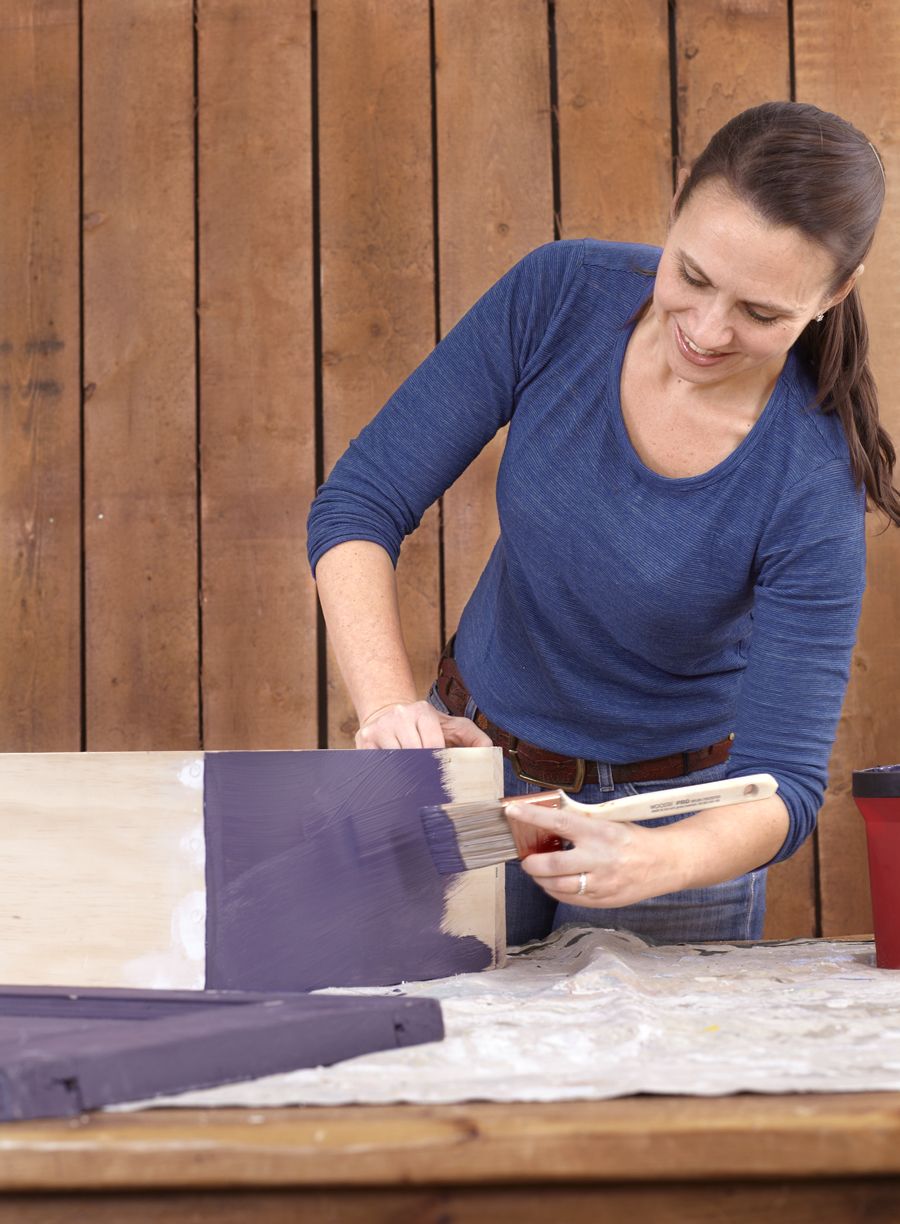
The final step in creating your shutter-door ironing cabinet is painting. This process will unify the new wood of the cabinet with the salvaged shutter, creating a cohesive look.
Before painting, remove the shutter door, ironing board, and any accessories you’ve installed. Fill any visible screw holes with wood filler and sand the entire cabinet smooth once the filler has dried.
To match the cabinet to your shutter, take a sample of the shutter’s color to a paint store for color matching. Choose a paint suitable for wood surfaces and use a primer for better adhesion and coverage. If your shutter has a unique finish or patina, you might opt for a distressing technique on the cabinet to blend the styles seamlessly.
Apply the paint evenly using a brush or roller, following the wood grain. Allow each coat to dry completely before applying the next. Typically, two coats of paint will provide good coverage. For a polished finish, gently sand between coats with fine-grit sandpaper.
Once the paint has fully dried, reattach the shutter door and all accessories. Finally, hang your completed ironing cabinet using heavy-duty fasteners appropriate for your wall type. Check that the cabinet is level and securely anchored to the wall.
